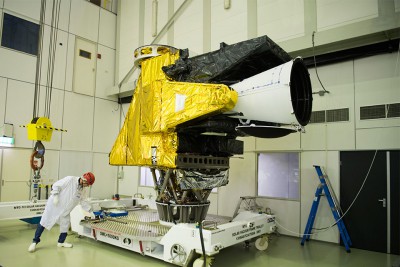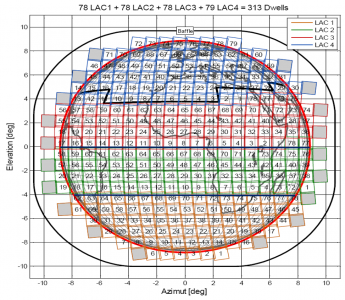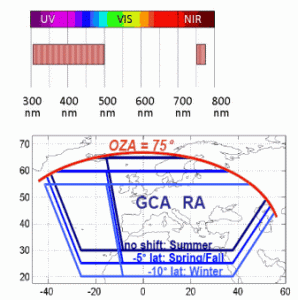Meteosat Third Generation (MTG) is EUMETSAT’s next generation of geostationary satellites, following on from earlier successful missions.
This next generation, following on from Meteosat Second Generation, provides an evolution of the imaging service, including a new Lightning Imager, and a state-of-the-art atmospheric sounding service providing measurements in the infrared and ultraviolet spectrum.
To achieve these services, MTG will see the launch of six new geostationary satellites, with the first satellite (MTG-I1) having been launched in December 2022. The satellite series is based on 3-axis platforms and comprise:
- Four Imaging Satellites (MTG-I) (20 years of operational services expected)
- Two Sounding Satellites (MTG-S) (15.5 years of operational services expected)
The full operational configuration will consist of two MTG-I satellites operating in tandem, one scanning Europe and Africa every 10 minutes, and the other scanning only Europe every 2.5 minutes, and one MTG-S satellite.
Further details on the instruments onboard the MTG satellites, can be found in the user guides linked below
- Flexible Combined Imager (FCI)
- Lightning Imager (LI)
- Infrared Sounder (IRS)
- Ultraviolet Sounder (UVN) (to come)
Ground Segment
The Meteosat Third Generation Ground Segment acquires data from all the MTG satellites, and generates, archives and distributes the products. It also provides the capabilities to command and control the satellites and the ground segment itself.
The ground segment consists of:
- The Telemetry, Tracking and Control (TT&C) ground stations — the TT&C interface between the Space Segment and the Mission Control Centre.
- The Mission Data Acquisition (MDA) ground stations — the payload data interface between the Space Segment and the Mission Control Centre.
- The Mission Operations Facility (MOF) — provides functions for the preparation, planning and operation of the system, including satellite and mission operations and flight dynamics.
- The Instrument Level 1 Data Processing facilities (IDPF-I and IDPF-S) — these extract the measurements from the sensors. They also perform a series of functions for the generation of level 1b data and the processing of level 1c data.
- Level 2 Processing Facility (L2PF), for the extraction of centrally generated products.






To leave a comment, please go to the posting details.